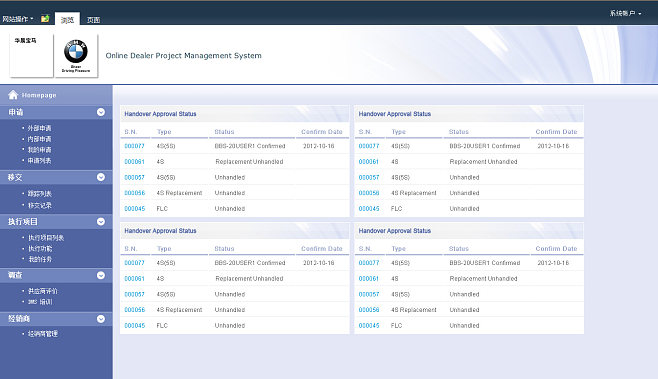1. 安装nginx1.1 选择稳定版本
我们编译安装nginx来定制自己的模块,机器CentOS 6.2 x86_64。首先安装缺少的依赖包:
1
# yum -y install gcc gcc-c++ make libtool zlib zlib-devel openssl openssl-devel pcre pcre-devel
这些软件包如果yum上没有的话可以下载源码来编译安装,只是要注意编译时默认安装的目录,确保下面在安装nginx时能够找到这些动态库文件(ldconfig)。
从 https://nginx.org/en/download.html下载稳定版nginx-1.6.3.tar.gz到/usr/local/src下解压。
为了后续准备我们另外下载2个插件模块:nginx_upstream_check_module-0.3.0.tar.gz—— 检查后端服务器的状态,nginx-goodies-nginx-sticky-module-ng-bd312d586752.tar.gz(建议在/usr/local/src下解压后将目录重命名为nginx-sticky-module-ng-1.2.5) —— 后端做负载均衡解决session sticky问题(与upstream_check模块结合使用需要另外打补丁,请参考nginx负载均衡配置实战)。
请注意插件与nginx的版本兼容问题,一般插件越新越好,nginx不用追新,稳定第一。nginx-1.4.7,nginx-sticky-module-1.1,nginx_upstream_check_module-0.2.0,这个搭配也没问题。sticky-1.1与nginx-1.6版本由于更新没跟上编译出错。(可以直接使用Tengine,默认就包括了这些模块)
1
2
3
4
5
6
7
8
[root@cachets nginx-1.6.3]# pwd
/usr/local/src/nginx-1.6.3
[root@cachets nginx-1.6.3]# ./configure --prefix=/usr/local/nginx-1.6 --with-pcre
> --with-http_stub_status_module --with-http_ssl_module
> --with-http_gzip_static_module --with-http_realip_module
> --add-module=../nginx_upstream_check_module-0.3.0
[root@cachets nginx-1.6.3]# make && make install
1.2 常用编译选项说明
nginx大部分常用模块,编译时./configure --help以--without开头的都默认安装。
--prefix=PATH : 指定nginx的安装目录。默认 /usr/local/nginx
--conf-path=PATH : 设置nginx.conf配置文件的路径。nginx允许使用不同的配置文件启动,通过命令行中的-c选项。默认为prefix/conf/nginx.conf
--user=name: 设置nginx工作进程的用户。安装完成后,可以随时在nginx.conf配置文件更改user指令。默认的用户名是nobody。--group=name类似
--with-pcre : 设置PCRE库的源码路径,如果已通过yum方式安装,使用--with-pcre自动找到库文件。使用--with-pcre=PATH时,需要从PCRE网站下载pcre库的源码(版本4.4 – 8.30)并解压,剩下的就交给Nginx的./configure和make来完成。perl正则表达式使用在location指令和 ngx_http_rewrite_module模块中。
--with-zlib=PATH : 指定 zlib(版本1.1.3 – 1.2.5)的源码解压目录。在默认就启用的网络传输压缩模块ngx_http_gzip_module时需要使用zlib 。
--with-http_ssl_module : 使用https协议模块。默认情况下,该模块没有被构建。前提是openssl与openssl-devel已安装
--with-http_stub_status_module : 用来监控 Nginx 的当前状态
--with-http_realip_module : 通过这个模块允许我们改变客户端请求头中客户端IP地址值(例如X-Real-IP 或 X-Forwarded-For),意义在于能够使得后台服务器记录原始客户端的IP地址
--add-module=PATH : 添加第三方外部模块,如nginx-sticky-module-ng或缓存模块。每次添加新的模块都要重新编译(Tengine可以在新加入module时无需重新编译)
再提供一种编译方案:
1
2
3
4
5
6
7
8
9
10
11
12
13
14
15
16
17
18
19
./configure
> --prefix=/usr
> --sbin-path=/usr/sbin/nginx
> --conf-path=/etc/nginx/nginx.conf
> --error-log-path=/var/log/nginx/error.log
> --http-log-path=/var/log/nginx/access.log
> --pid-path=/var/run/nginx/nginx.pid
> --lock-path=/var/lock/nginx.lock
> --user=nginx
> --group=nginx
> --with-http_ssl_module
> --with-http_stub_status_module
> --with-http_gzip_static_module
> --http-client-body-temp-path=/var/tmp/nginx/client/
> --http-proxy-temp-path=/var/tmp/nginx/proxy/
> --http-fastcgi-temp-path=/var/tmp/nginx/fcgi/
> --http-uwsgi-temp-path=/var/tmp/nginx/uwsgi
> --with-pcre=../pcre-7.8
> --with-zlib=../zlib-1.2.3
1.3 启动关闭nginx
1
2
3
4
5
6
7
8
9
10
11
12
## 检查配置文件是否正确
# /usr/local/nginx-1.6/sbin/nginx -t
# ./sbin/nginx -V # 可以看到编译选项
## 启动、关闭
# ./sbin/nginx # 默认配置文件 conf/nginx.conf,-c 指定
# ./sbin/nginx -s stop
或 pkill nginx
## 重启,不会改变启动时指定的配置文件
# ./sbin/nginx -s reload
或 kill -HUP `cat /usr/local/nginx-1.6/logs/nginx.pid`
当然也可以将 nginx 作为系统服务管理,下载 nginx到/etc/init.d/,修改里面的路径然后赋予可执行权限。
1
# service nginx {start|stop|status|restart|reload|configtest}
1.4 yum安装
—— 2015-05-22更新
yum安装rpm包会比编译安装简单很多,默认会安装许多模块,但缺点是如果你想以后安装第三方模块那就没办法了。
1
2
3
4
5
6
# vi /etc/yum.repo.d/nginx.repo
[nginx]
name=nginx repo
baseurl=https://nginx.org/packages/centos/$releasever/$basearch/
gpgcheck=0
enabled=1
剩下的就yum install nginx搞定,也可以yum install nginx-1.6.3安装指定版本(前提是你去packages里看到有对应的版本,默认是最新版稳定版)。
2. nginx.conf配置文件
Nginx配置文件主要分成四部分:main(全局设置)、server(主机设置)、upstream(上游服务器设置,主要为反向代理、负载均衡相关配置)和 location(URL匹配特定位置后的设置),每部分包含若干个指令。main部分设置的指令将影响其它所有部分的设置;server部分的指令主要用于指定虚拟主机域名、IP和端口;upstream的指令用于设置一系列的后端服务器,设置反向代理及后端服务器的负载均衡;location部分用于匹配网页位置(比如,根目录“/”,“/images”,等等)。他们之间的关系式:server继承main,location继承server;upstream既不会继承指令也不会被继承。它有自己的特殊指令,不需要在其他地方的应用。
当前nginx支持的几个指令上下文:
2.1 通用
下面的nginx.conf简单的实现nginx在前端做反向代理服务器的例子,处理js、png等静态文件,jsp等动态请求转发到其它服务器tomcat:
1
2
3
4
5
6
7
8
9
10
11
12
13
14
15
16
17
18
19
20
21
22
23
24
25
26
27
28
29
30
31
32
33
34
35
36
37
38
39
40
41
42
43
44
45
46
47
48
49
50
51
52
53
54
55
56
57
58
59
60
61
62
63
64
65
66
67
68
69
70
71
72
73
74
75
76
77
78
79
80
81
82
83
84
85
86
87
88
89
90
91
92
93
94
95
96
97
98
99
100
101
102
103
104
105
106
107
108
109
110
111
112
113
114
115
user www www;
worker_processes 2;
error_log logs/error.log;
#error_log logs/error.log notice;
#error_log logs/error.log info;
pid logs/nginx.pid;
events {
use epoll;
worker_connections 2048;
}
http {
include mime.types;
default_type application/octet-stream;
#log_format main '$remote_addr - $remote_user [$time_local] "$request" '
# '$status $body_bytes_sent "$http_referer" '
# '"$http_user_agent" "$http_x_forwarded_for"';
#access_log logs/access.log main;
sendfile on;
# tcp_nopush on;
keepalive_timeout 65;
# gzip压缩功能设置
gzipon;
gzip_min_length 1k;
gzip_buffers 4 16k;
gzip_http_version 1.0;
gzip_comp_level 6;
gzip_types text/htmltext/plaintext/csstext/javaapplication/jsonapplication/javaapplication/x-javaapplication/xml;
gzip_vary on;
# http_proxy 设置
client_max_body_size 10m;
client_body_buffer_size 128k;
proxy_connect_timeout 75;
proxy_send_timeout 75;
proxy_read_timeout 75;
proxy_buffer_size 4k;
proxy_buffers 4 32k;
proxy_busy_buffers_size 64k;
proxy_temp_file_write_size 64k;
proxy_temp_path /usr/local/nginx/proxy_temp1 2;
# 设定负载均衡后台服务器列表
upstream backend {
#ip_hash;
server 192.168.10.100:8080 max_fails=2 fail_timeout=30s ;
server 192.168.10.101:8080 max_fails=2 fail_timeout=30s ;
}
# 很重要的虚拟主机配置
server {
listen 80;
server_name itoatest.example.com;
root /apps/oaapp;
charset utf-8;
access_log logs/host.access.log main;
#对 / 所有做负载均衡+反向代理
location / {
root /apps/oaapp;
index index.jsp index.html index.htm;
proxy_pass https://backend;
proxy_redirect off;
# 后端的Web服务器可以通过X-Forwarded-For获取用户真实IP
proxy_set_header Host $host;
proxy_set_header X-Real-IP $remote_addr;
proxy_set_header X-Forwarded-For $proxy_add_x_forwarded_for;
proxy_next_upstream error timeout invalid_header http_500 http_502 http_503 http_504;
}
#静态文件,nginx自己处理,不去backend请求tomcat
location ~* /download/{
root /apps/oa/fs;
}
location ~ .*.(gif|jpg|jpeg|bmp|png|ico|txt|js|css)$
{
root /apps/oaapp;
expires 7d;

}
location /nginx_status{
stub_status on;
access_log off;
allow 192.168.10.0/24;
deny all;
}
location ~ ^/(WEB-INF)/ {
deny all;
}
#error_page 404 /404.html;
# redirect server error pages to the static page /50x.html
#
error_page 500 502 503 504 /50x.html;
location = /50x.html {
root html;
}
}
## 其它虚拟主机,server 指令开始
}
2.2 常用指令说明2.2.1 main全局配置
nginx在运行时与具体业务功能(比如http服务或者email服务代理)无关的一些参数,比如工作进程数,运行的身份等。
woker_processes 2
在配置文件的顶级main部分,worker角色的工作进程的个数,master进程是接收并分配请求给worker处理。这个数值简单一点可以设置为cpu的核数grep ^processor /proc/cpuinfo | wc -l,也是 auto 值,如果开启了ssl和gzip更应该设置成与逻辑CPU数量一样甚至为2倍,可以减少I/O操作。如果nginx服务器还有其它服务,可以考虑适当减少。
worker_cpu_affinity
也是写在main部分。在高并发情况下,通过设置cpu粘性来降低由于多CPU核切换造成的寄存器等现场重建带来的性能损耗。如worker_cpu_affinity 0001 0010 0100 1000; (四核)。
worker_connections 2048
写在events部分。每一个worker进程能并发处理(发起)的最大连接数(包含与客户端或后端被代理服务器间等所有连接数)。nginx作为反向代理服务器,计算公式 最大连接数 = worker_processes * worker_connections/4,所以这里客户端最大连接数是1024,这个可以增到到8192都没关系,看情况而定,但不能超过后面的worker_rlimit_nofile。当nginx作为http服务器时,计算公式里面是除以2。
worker_rlimit_nofile 10240
写在main部分。默认是没有设置,可以限制为操作系统最大的限制65535。
use epoll
写在events部分。在Linux操作系统下,nginx默认使用epoll事件模型,得益于此,nginx在Linux操作系统下效率相当高。同时Nginx在OpenBSD或FreeBSD操作系统上采用类似于epoll的高效事件模型kqueue。在操作系统不支持这些高效模型时才使用select。
2.2.2 http服务器
与提供http服务相关的一些配置参数。例如:是否使用keepalive啊,是否使用gzip进行压缩等。
sendfile on
开启高效文件传输模式,sendfile指令指定nginx是否调用sendfile函数来输出文件,减少用户空间到内核空间的上下文切换。对于普通应用设为 on,如果用来进行下载等应用磁盘IO重负载应用,可设置为off,以平衡磁盘与网络I/O处理速度,降低系统的负载。
keepalive_timeout 65 : 长连接超时时间,单位是秒,这个参数很敏感,涉及浏览器的种类、后端服务器的超时设置、操作系统的设置,可以另外起一片文章了。长连接请求大量小文件的时候,可以减少重建连接的开销,但假如有大文件上传,65s内没上传完成会导致失败。如果设置时间过长,用户又多,长时间保持连接会占用大量资源。
send_timeout : 用于指定响应客户端的超时时间。这个超时仅限于两个连接活动之间的时间,如果超过这个时间,客户端没有任何活动,Nginx将会关闭连接。
client_max_body_size 10m
允许客户端请求的最大单文件字节数。如果有上传较大文件,请设置它的限制值
client_body_buffer_size 128k
缓冲区代理缓冲用户端请求的最大字节数
模块http_proxy:
这个模块实现的是nginx作为反向代理服务器的功能,包括缓存功能(另见文章)
proxy_connect_timeout 60
nginx跟后端服务器连接超时时间(代理连接超时)
proxy_read_timeout 60
连接成功后,与后端服务器两个成功的响应操作之间超时时间(代理接收超时)
proxy_buffer_size 4k
设置代理服务器(nginx)从后端realserver读取并保存用户头信息的缓冲区大小,默认与proxy_buffers大小相同,其实可以将这个指令值设的小一点
proxy_buffers 4 32k
proxy_buffers缓冲区,nginx针对单个连接缓存来自后端realserver的响应,网页平均在32k以下的话,这样设置
proxy_busy_buffers_size 64k
高负荷下缓冲大小(proxy_buffers*2)
proxy_max_temp_file_size
当 proxy_buffers 放不下后端服务器的响应内容时,会将一部分保存到硬盘的临时文件中,这个值用来设置最大临时文件大小,默认1024M,它与 proxy_cache 没有关系。大于这个值,将从upstream服务器传回。设置为0禁用。
proxy_temp_file_write_size 64k
当缓存被代理的服务器响应到临时文件时,这个选项限制每次写临时文件的大小。proxy_temp_path(可以在编译的时候)指定写到哪那个目录。
proxy_pass,proxy_redirect见 location 部分。
模块http_gzip:
gzip on : 开启gzip压缩输出,减少网络传输。
gzip_min_length 1k : 设置允许压缩的页面最小字节数,页面字节数从header头得content-length中进行获取。默认值是20。建议设置成大于1k的字节数,小于1k可能会越压越大。
gzip_buffers 4 16k : 设置系统获取几个单位的缓存用于存储gzip的压缩结果数据流。4 16k代表以16k为单位,安装原始数据大小以16k为单位的4倍申请内存。
gzip_http_version 1.0 : 用于识别 http 协议的版本,早期的浏览器不支持 Gzip 压缩,用户就会看到乱码,所以为了支持前期版本加上了这个选项,如果你用了 Nginx 的反向代理并期望也启用 Gzip 压缩的话,由于末端通信是 http/1.0,故请设置为 1.0。
gzip_comp_level 6 : gzip压缩比,1压缩比最小处理速度最快,9压缩比最大但处理速度最慢(传输快但比较消耗cpu)
gzip_types :匹配mime类型进行压缩,无论是否指定,”text/html”类型总是会被压缩的。
gzip_proxied any : Nginx作为反向代理的时候启用,决定开启或者关闭后端服务器返回的结果是否压缩,匹配的前提是后端服务器必须要返回包含”Via”的 header头。
gzip_vary on : 和http头有关系,会在响应头加个 Vary: Accept-Encoding ,可以让前端的缓存服务器缓存经过gzip压缩的页面,例如,用Squid缓存经过Nginx压缩的数据。。
2.2.3 server虚拟主机
http服务上支持若干虚拟主机。每个虚拟主机一个对应的server配置项,配置项里面包含该虚拟主机相关的配置。在提供mail服务的代理时,也可以建立若干server。每个server通过监听地址或端口来区分。
listen
监听端口,默认80,小于1024的要以root启动。可以为listen *:80、listen 127.0.0.1:80等形式。
server_name
服务器名,如localhost、www.example.com,可以通过正则匹配。
模块http_stream
这个模块通过一个简单的调度算法来实现客户端IP到后端服务器的负载均衡,upstream后接负载均衡器的名字,后端realserver以 host:port options; 方式组织在 {} 中。如果后端被代理的只有一台,也可以直接写在 proxy_pass 。
2.2.4 location
http服务中,某些特定的URL对应的一系列配置项。
root /var/www/html
定义服务器的默认网站根目录位置。如果locationURL匹配的是子目录或文件,root没什么作用,一般放在server指令里面或/下。
index index.jsp index.html index.htm
定义路径下默认访问的文件名,一般跟着root放
proxy_pass http:/backend
请求转向backend定义的服务器列表,即反向代理,对应upstream负载均衡器。也可以proxy_pass https://ip:port。
proxy_redirect off;
proxy_set_header Host $host;
proxy_set_header X-Real-IP $remote_addr;
proxy_set_header X-Forwarded-For $proxy_add_x_forwarded_for;
这四个暂且这样设,如果深究的话,每一个都涉及到很复杂的内容,也将通过另一篇文章来解读。
关于location匹配规则的写法,可以说尤为关键且基础的,参考文章 nginx配置location总结及rewrite规则写法;
2.3 其它2.3.1 访问控制 allow/deny
Nginx 的访问控制模块默认就会安装,而且写法也非常简单,可以分别有多个allow,deny,允许或禁止某个ip或ip段访问,依次满足任何一个规则就停止往下匹配。如:
1
2
3
4
5
6
7
8
9
10
location /nginx-status{

stub_status on;
access_log off;
# auth_basic "NginxStatus";
# auth_basic_user_file /usr/local/nginx-1.6/htpasswd;
allow 192.168.10.100;
allow 172.29.73.0/24;
deny all;
}
我们也常用 httpd-devel 工具的 htpasswd 来为访问的路径设置登录密码:
1
2
3
4
5
6
7
# htpasswd -c htpasswd admin
New passwd:
Re-typenew password:
Adding password foruser admin
# htpasswd htpasswd admin //修改admin密码
# htpasswd htpasswd sean //多添加一个认证用户
这样就生成了默认使用CRYPT加密的密码文件。打开上面nginx-status的两行注释,重启nginx生效。
2.3.2 列出目录 autoindex
Nginx默认是不允许列出整个目录的。如需此功能,打开nginx.conf文件,在location,server 或 http段中加入autoindex on;,另外两个参数最好也加上去:
autoindex_exact_size off; 默认为on,显示出文件的确切大小,单位是bytes。改为off后,显示出文件的大概大小,单位是kB或者MB或者GB
autoindex_localtime on;
默认为off,显示的文件时间为GMT时间。改为on后,显示的文件时间为文件的服务器时间
1
2
3
4
5
6
location /images{
root /var/www/nginx-default/images;
autoindex on;
autoindex_exact_size off;
autoindex_localtime on;
}
在学习Linux的过程中有任何不懂的可以免费找我咨询QQ:1815759616
标签: 后端客户端

